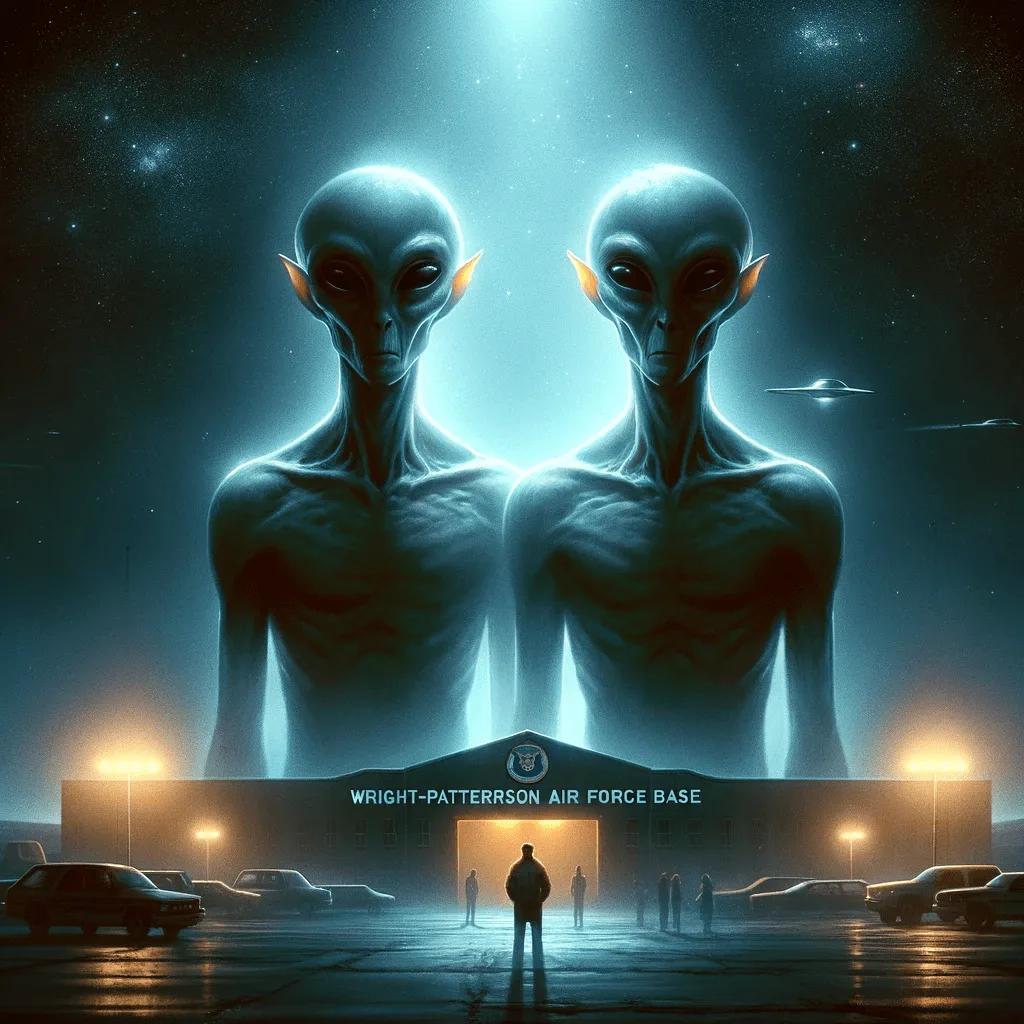The WPAFB Twin Humanoid Case (1959)

In 1959, a tale emerged from the corridors of Wright-Patterson Air Force Base (WPAFB) involving a French scientist, known only as “Mr. L”. This narrative, interwoven with aspects of advanced scientific research, Nobel laureates, and potential extraterrestrial encounters, paints a vivid picture of an era where the boundaries of understanding were being constantly expanded. This account draws on both the work of renowned molecular biologists and the long-standing mysteries associated with WPAFB.
In 1959, a French scientist, referred to as “Mr. L,” stated that the U.S. government had invited him to work at Wright-Patterson Air Force Base (WPAFB). He had previously collaborated with Lwoff, Monod, and Jacob, who were awarded the Nobel Prize in 1965 and was a Professor at College de France.
Mr. L alleges that during a three-month period in 1959, he analyzed the cellular composition of two identical humanoid beings at WPAFB. These entities were over 7 feet tall and appeared to have physical anomalies suggestive of an accident. Their heads were unharmed, showcasing high foreheads, elongated blonde hair, and eyes with an Asian resemblance. They had petite noses and mouths, thin lips, and lacked facial hair. Unusually, their skin lacked keratin granules, and their lymphatic system seemed to replace the circulatory one. Their eyes, of a pale blue hue, resembled those of humans, and they possessed slender, human-like hands and flat feet. Mr. L was bound to confidentiality for a decade and asserts that these remains were housed in WPAFB FTD/TDETR as of 1959.
FTD might refer to “Foreign Technology Division,” which was a part of the Air Force Systems Command located at Wright-Patterson Air Force Base. FTD was responsible for the study and analysis of foreign aerospace technologies.
TDETR could stand for Technology Division ET Research.
Wright-Patterson Air Force Base is located near Dayton, Ohio. Historically, it’s known for its significant roles in various research, development, and testing activities, and it has been associated with many UFO and extraterrestrial theories, including the alleged storage of the Roswell UFO wreckage.
Lwoff, Monod, and Jacob are renowned figures in the world of molecular biology. These three scientists made significant contributions to the understanding of the genetic control of enzyme and virus synthesis. Their discoveries were groundbreaking at the time and have since shaped the foundational knowledge of modern biology.
André Lwoff was an eminent microbiologist, known for his work on the physiological and morphological characteristics of bacteria, particularly their viral infections and lysogenic states (a condition where viral DNA is integrated into the bacterial chromosome).
Jacques Monod, a biochemist, is best recognized for his research on the nature and regulation of enzymes. He played a pivotal role in elucidating the control of enzymatic activity in bacteria.
François Jacob made considerable strides alongside Monod. Together, they developed the operon model, which describes how genes are regulated in bacteria. This model helps explain how genes are turned on or off in response to environmental changes.
In 1965, their collective efforts were acknowledged with the Nobel Prize in Physiology or Medicine. The prize was awarded to them “for their discoveries concerning genetic control of enzyme and virus synthesis.”
Additionally, being a Professor at the College de France is a prestigious position. The Collège de France, located in Paris, is a revered institution where professors are appointed to give lectures in their specialized fields of knowledge, without the constraints of a traditional university curriculum. The position is an acknowledgment of the individual’s significant contributions to their discipline and their standing in the academic community.
The story of “Mr. L” at WPAFB serves as a poignant reminder of the scientific discovery, international collaboration, and the ever-present allure of the unknown. Whether viewed through the lens of biology, aerospace research, or potential extraterrestrial encounters, it reinforces the value of curiosity, rigor, and interdisciplinary cooperation in our quest for knowledge. The lives and work of Lwoff, Monod, and Jacob, as well as the enigma of WPAFB, underscore the interconnected nature of humanity’s search for understanding and truth.

